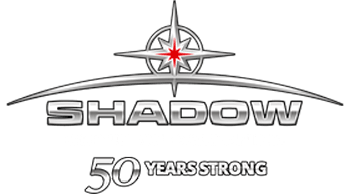Are you a business owner? If so, you most likely understand the necessity of transport services and the value they offer in delivering products to their proper locations. If your business demands products to be shipped internationally, then you’ll want to be familiar with the notion of transload and cross-dock services. In this post, we’ll unpack the details of each one, and explain their differences so you can fully understand how they impact your business.
What are Cross Docking Services?
The process of cross-docking consists of removing products from an inbound moving service, delivering them to a dispensing dock, and then placing them in an outbound service for transportation. Cross-docking helps to either lower or completely eliminate the time that the material or product may spend in storage.
This assists businesses with saving money that would have otherwise been wasted on unnecessary storage fees. Cross-docking is utilized to save time and enhance efficiency. It’s a system that is typically implemented to gather goods from other transports and combine them into a single transport.
Companies offering cross-docking services typically refer to it as drayage. And a dray is nothing more than a container or receptacle that’s transferred from one place to another through a loading dock, rail yard, harbour, etc. Once unpacked at the warehouse, the container is then returned to its original location — the speed at which it is returned will determine how much money the business will save.
What Are Transloading Services?
Transloading services are used to ship goods from one method of transportation to another. This is particularly pertinent when shipping internationally. Typically, these facilities are situated close to the port that collects the delivery.
Many tend to think of transloading and intermodal transportation as the same thing, or simply just confuse the two of them altogether. With intermodal transport, the product remains within the containers, but, similar to both transloading and cross-docking, the products are delivered using a variety of transportation methods.
The Difference Between Cross Docking and Transporting Services
Transloading uses the cargo in containers. For global deliveries, the products are simply transloaded into the proper truck that corresponds with the goods within the delivery. For example, if the goods delivered arrive on a ship, they are transloaded to a different ship. If the freight arrives on an ocean liner, it is then transloaded to a train, plane, or truck.
Conversely, cross-docking is a more prompt process. This is because the goods are already packed on pallets. In the case of transloading, the product has yet to be palletized upon removal from its receptacle. Despite the differences, the similarity between the two is the proper management and communication that needs to take place during the transportation for smooth delivery.
Cross Docking or Transloading: Which Option is Better?
There are pros and cons to each method. However, to find the right one for you and your business, there are a few questions you should ask yourself:
- What is the destination of the delivery?
- What methods of transportation will be needed?
- What is the product demand like?
- What is the business size/scope?
- Where is the business situated?
Once you have some solid answers by answering these questions (or similar ones), you’ll be in a much better position to make a more informed choice.
The Necessity of Cross Docking and Transloading Services
The supply chain needs the methods of both cross-docking and transloading. These systems are necessary for preparing goods and other products for delivery.
Transloading is used to assist with the receptacles and get them prepared, as well as handle the freight to ensure it shadows each phase in the supply chain. For example, when the shipment is delivered to a port in San Diego, it is taken from the ship and then sent to a transloader. This is then followed by a sequential process of unshipping, palletizing, categorization, and wrapping for additional shipment.
Here are some of the additive services transloaders provide:
- Delivery of product from one destination to the next
- Wrapping/covering
- Weight examination
- Customs control
The main difference between transloaders and cross-docking is transloaders will palletize the freight until the following phase of the supply chain is executed. The facilities for cross-docking are nearby at important junctures in the supply chain, resulting in lowered resource requirements for managing and stockpiling freight.
Cross-docking is positioned at the final stretch of the supply chain process. It is needed to move products and materials from producers to customers. Transloading utilizes cargo ships, however, cross-docking does not. Cross-docking simply includes the receiving of freight on vehicles, and consequently, its turnover to other vehicles. As a preeminent transport company in Calgary, here at Shadow Group, we want you to be educated with the right information in regards to cross-dock and transloading services — so your business can flourish.
Summary
As you can tell, the supply chain procedure is a complicated and lengthy process that is designed to best meet the needs of customers in the most efficient and effective manner possible. If you’re looking for a good transport service, Calgary is a great place to be. This is because Shadow Group can provide the best cross-docking and transloading services that will help your business prosper.
